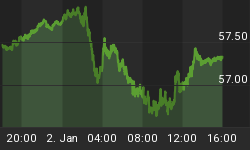On the eve of Fed chairman nominee Ben Bernanke's Senate confirmation hearing, there is the question whether he will be the same kind of guardian of price stability as his predecessor, Alan Greenspan. Actually, Greenspan is not a tough act to follow. Let's look at what Greenspan is handing off in terms of price stability compared to what he inherited. Upon inspection, the Greenspan myth regarding price stability belies the facts. The data in Chart 1 show that as of September, the yearover-year increase in consumer prices was 3.76% -- only 10 basis points less than it was in August 1987, when Greenspan took the helm from Volcker. That's the best Greenspan could manage when federal spending as a percent of GDP is lower than when he took over (thanks to the disintegration of the "Evil Empire"), when productivity took off due to the implementation of information technology and when the effective global labor supply curve took a quantum leap to the right due to the integration of China, India and Central Europe in the global economy - a measly 10 basis points?
Chart 1
The mainstream tends to be a bit myopic when it comes to price stability. It limits its focus to the prices of goods and services to the exclusion of asset prices. If we expand our view of price stability to include the prices of houses, Greenspan would be viewed as a sleeping guardian of price stability. Chart 2 shows the history of the house price index calculated by the Office of Federal Housing Enterprise Oversight (OFHEO). When Greenspan took over the Fed chairmanship in the third quarter of 1987, the year-over-year change in this price index was 7.7%. The latest reading, the second quarter of 2005, is a 13.4% year-over-year increase in house prices. Some price stability, huh?
Chart 2
















